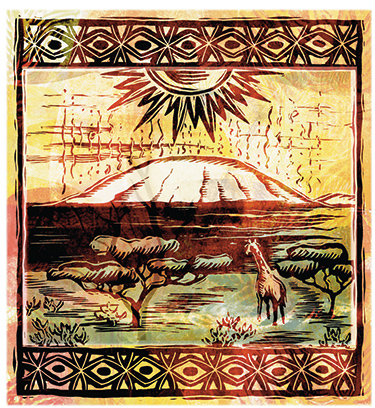Don’t blame global warming for Kilimanjaro’s vanishing ice
 The “snows” of Africa’s Mount Kilimanjaro inspired the title of an iconic American short story, but now its dwindling icecap is being cited as proof for human-induced global warming. However, two UW researchers writing in the July/August edition of American Scientist magazine say global warming has nothing to do with the decline of Kilimanjaro’s ice, and using the mountain in northern Tanzania as a “poster child” for climate change is simply inaccurate.
The “snows” of Africa’s Mount Kilimanjaro inspired the title of an iconic American short story, but now its dwindling icecap is being cited as proof for human-induced global warming. However, two UW researchers writing in the July/August edition of American Scientist magazine say global warming has nothing to do with the decline of Kilimanjaro’s ice, and using the mountain in northern Tanzania as a “poster child” for climate change is simply inaccurate.
“There are dozens, if not hundreds, of photos of mid-latitude glaciers you could show where there is absolutely no question that they are declining in response to the warming atmosphere,” says climatologist Philip Mote, a University of Washington research scientist.
But in the tropics—particularly on Kilimanjaro—processes are at work that are far different from those that have diminished glacial ice in temperate regions closer to the poles, he says.
Mote and Georg Kaser, a glaciologist at the University of Innsbruck in Austria, write in American Scientist that the decline in Kilimanjaro’s ice has been going on for more than a century and that most of it occurred before 1953, while evidence of atmospheric warming there before 1970 is inconclusive.
They attribute the ice decline primarily to complex interacting factors, including the vertical shape of the ice’s edge, which allows it to shrink but not expand. They also cite decreased snowfall, which reduces ice buildup and determines how much energy the ice absorbs—because the whiteness of new snow reflects more sunlight, the lack of new snow allows the ice to absorb more of the sun’s energy.
Unlike mid-latitude glaciers, which are warmed and melted by surrounding air in the summer, the ice loss on Kilimanjaro is driven strictly by solar radiation. Ice loss is mainly through a process called sublimation, which requires more than eight times as much energy as melting.
Sublimation occurs at below-freezing temperatures and converts ice directly to water vapor without going through the liquid phase. Mote likens it to moisture-sapping conditions that cause food to suffer freezer burn.